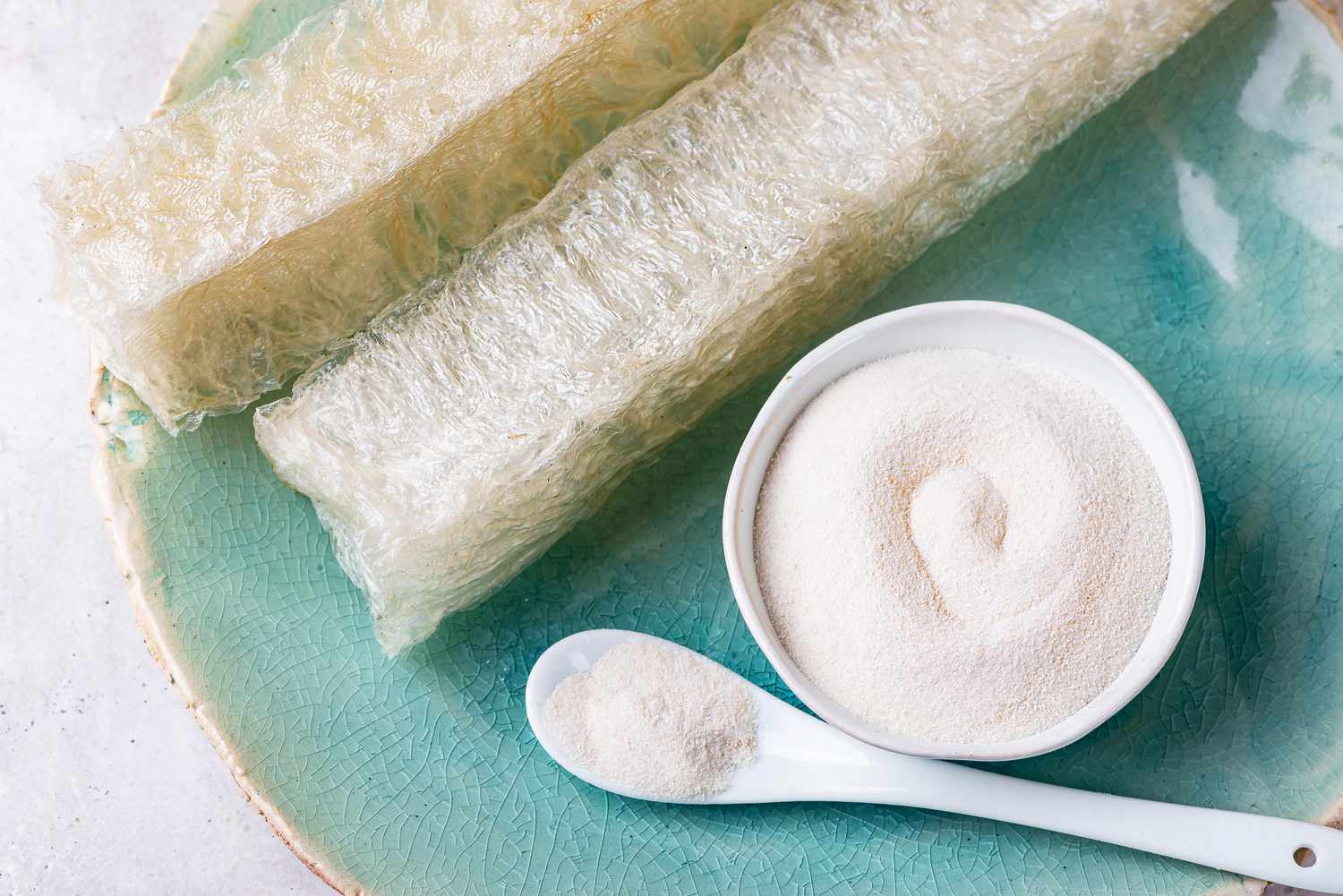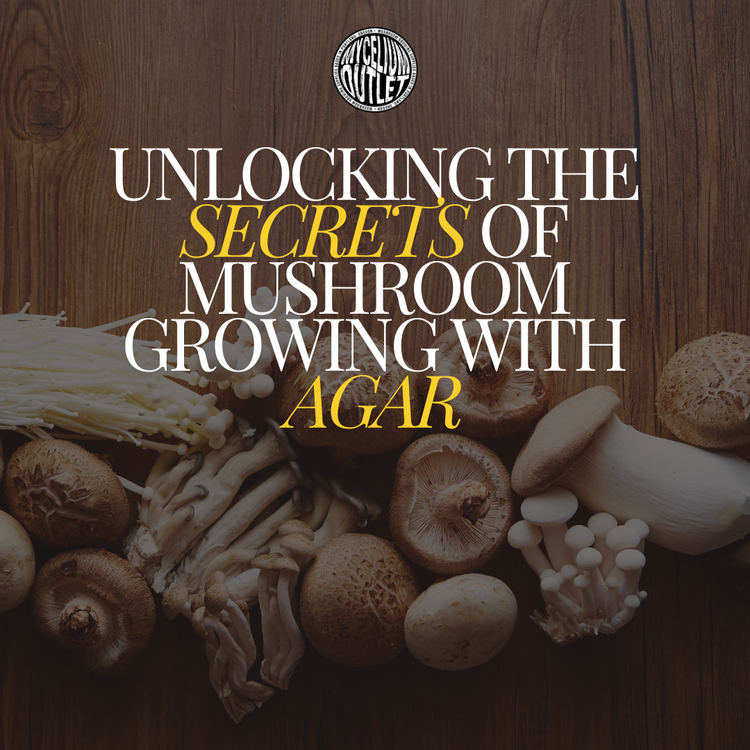Mastering Mushroom Cultivation: The Essential Role of Agar in Your Growing Success
Posted by Jmaequiogue on Aug 7th 2024

Mushroom cultivation has surged in popularity, with enthusiasts and professionals alike delving into the world of fungi. A critical component of successful mushroom growing is the use of agar, a gelatinous substance derived from algae, which provides a nutrient-rich environment for mushroom spores to germinate and mycelium to grow. This article explores the various aspects of mushroom growing agar, including its preparation, types, and benefits.
Understanding Agar in Mushroom Cultivation
Agar is an essential medium in mycology, the study of fungi. It serves as a solid base where mushroom spores can be inoculated, germinate, and grow into mycelium. The mycelium, a network of thread-like structures, is the vegetative part of the fungus and is crucial for mushroom development. By providing a stable and nutrient-rich environment, agar ensures optimal growth conditions for the mycelium, which eventually leads to the formation of mushroom fruiting bodies.
Types of Agar Used in Mushroom Cultivation
Several types of agar are commonly used in mushroom cultivation, each with its unique formulation to support different stages of fungal growth:
- Malt Extract Agar (MEA): MEA is one of the most popular types of agar used in mycology. It contains malt extract, which provides a rich source of carbohydrates and other nutrients essential for mycelial growth. MEA is ideal for cultivating a wide variety of mushroom species.
- Potato Dextrose Agar (PDA): PDA is another widely used agar medium, made from potato infusion and dextrose (glucose). This formulation supports robust mycelial growth and is particularly effective for isolating and cultivating fungi from environmental samples.
- Sabouraud Dextrose Agar (SDA): Originally developed for cultivating dermatophytes, SDA is also used in mycology due to its high dextrose content. It is less commonly used for mushrooms but can be useful for specific strains that thrive on sugar-rich media.
- Water Agar: This simple agar medium contains only agar and water, making it ideal for isolating fungi from mixed cultures. It is often used as a preliminary medium before transferring the mycelium to a more nutrient-rich agar like MEA or PDA.
Preparation of Agar
Preparing agar for mushroom cultivation is a straightforward process that requires careful attention to cleanliness and sterilization to prevent contamination. Here’s a step-by-step guide to preparing agar:
- Gather Materials:
- Agar powder
- Nutrient sources (e.g., malt extract, potato infusion, dextrose)
- Water
- Petri dishes or agar plates
- Pressure cooker or autoclave
- Sterile workspace and tools
- Mix Ingredients:
- Dissolve the appropriate amount of agar powder in water, following the specific recipe for the type of agar you are preparing (e.g., 20 grams of malt extract, 20 grams of agar powder, and 1 liter of water for MEA).
- Sterilize the Mixture:
- Pour the mixture into a heat-resistant container and sterilize it in a pressure cooker or autoclave at 15 psi (121°C) for 15-20 minutes. This step is crucial to eliminate any potential contaminants.
- Pour Agar into Petri Dishes:
- Once the agar mixture has cooled slightly but is still liquid, pour it into sterile Petri dishes. Work quickly and in a sterile environment to minimize contamination.
- Allow Agar to Solidify:
- Let the agar solidify at room temperature. Once solid, the agar plates are ready for inoculation with mushroom spores or mycelium.
Inoculation and Growth on Agar
Inoculating agar with mushroom spores or mycelium is a delicate process that requires precision and sterility. Follow these steps for successful inoculation and growth:
- Prepare the Inoculum:
- Obtain a sterile sample of mushroom spores or mycelium. This can be done using a spore syringe, a piece of mushroom tissue, or a colonized agar wedge.
- Inoculate the Agar:
- Using a sterile tool, such as an inoculation loop or scalpel, transfer the spores or mycelium onto the surface of the agar plate. Distribute the inoculum evenly to promote uniform growth.
- Incubate the Plates:
- Place the inoculated agar plates in an incubator or a controlled environment with the appropriate temperature and humidity for the mushroom species you are cultivating. Most mushroom species thrive at temperatures between 20-25°C.
- Monitor Growth:
- Regularly check the plates for signs of mycelial growth and contamination. Healthy mycelium will appear as white, thread-like structures spreading across the agar surface. Remove any contaminated plates immediately to prevent the spread of unwanted microorganisms.
Benefits of Using Agar in Mushroom Cultivation
Using agar in mushroom cultivation offers several advantages that contribute to successful and efficient growth:
- Controlled Environment:
- Agar provides a controlled environment where nutrients, moisture, and pH levels can be carefully regulated, ensuring optimal conditions for mycelial growth.
- Contamination Detection:
- Agar plates make it easy to detect and isolate contaminants, allowing for the selection of healthy, uncontaminated mycelium for further cultivation.
- Cloning and Isolation:
- Agar is essential for cloning mushroom strains and isolating specific mycelial cultures. This is particularly useful for maintaining genetic consistency and selecting desirable traits.
- Scalability:
- Agar allows for the propagation of mycelium on a small scale, which can then be transferred to larger substrates for mushroom production. This scalability is beneficial for both hobbyists and commercial growers.
Mycelium Outlet: Your Source for Quality Agar
For those looking to embark on mushroom cultivation, finding reliable sources of high-quality agar is crucial. Mycelium Outlet offers a range of agar products specifically designed for mushroom growers. Their agar formulations are made with premium ingredients to support robust mycelial growth and ensure successful cultivation. Whether you’re a beginner or an experienced mycologist, Mycelium Outlet has the right agar for your needs.
Conclusion
Mushroom growing agar is a fundamental component in the cultivation of fungi, providing a nutrient-rich and controlled environment for spores to germinate and mycelium to thrive. By understanding the different types of agar, their preparation, and the benefits they offer, cultivators can enhance their mushroom-growing endeavors. With the right tools and knowledge, including quality agar from Mycelium Outlet, anyone can enjoy the fascinating and rewarding process of mushroom cultivation.
